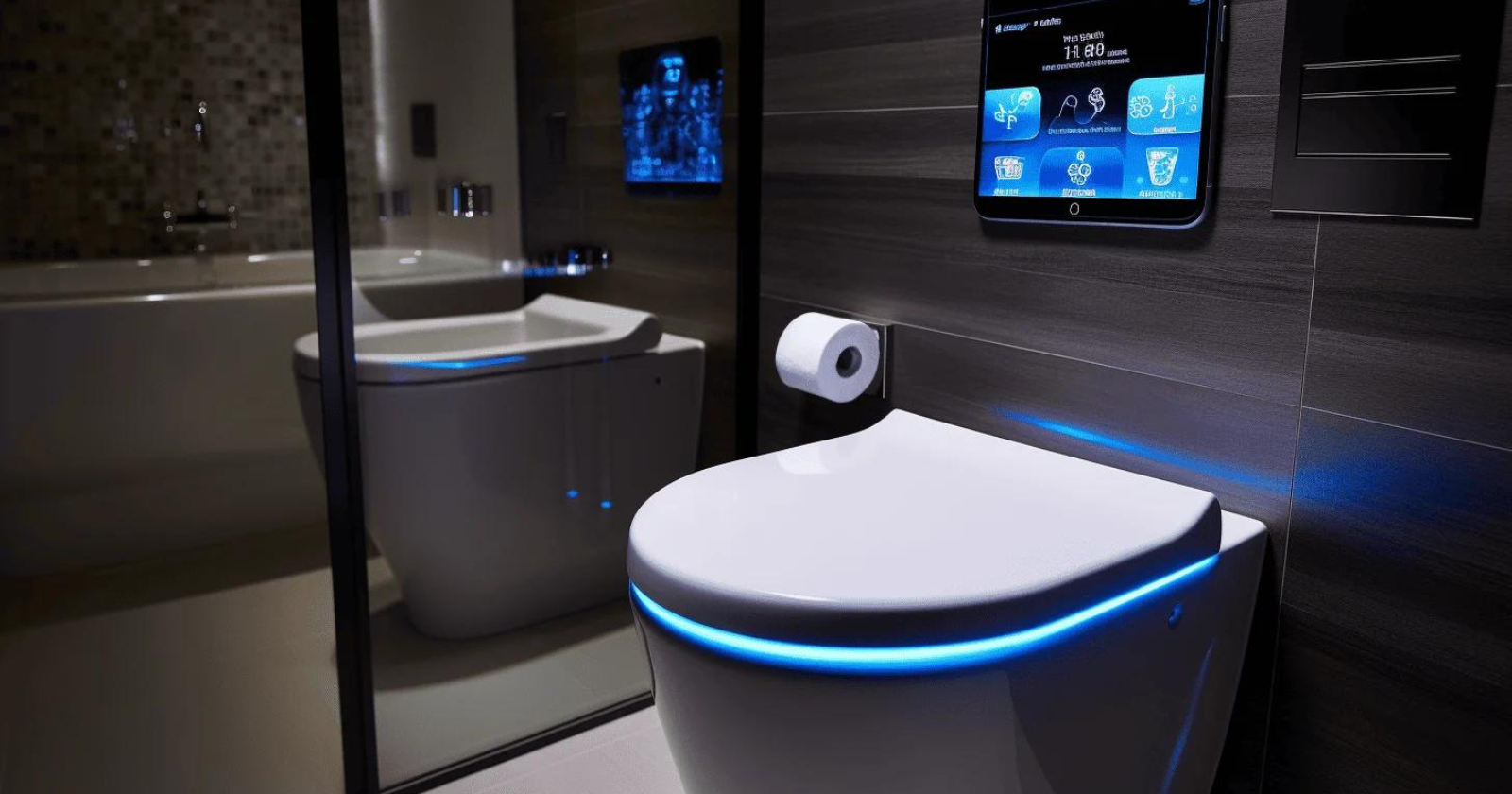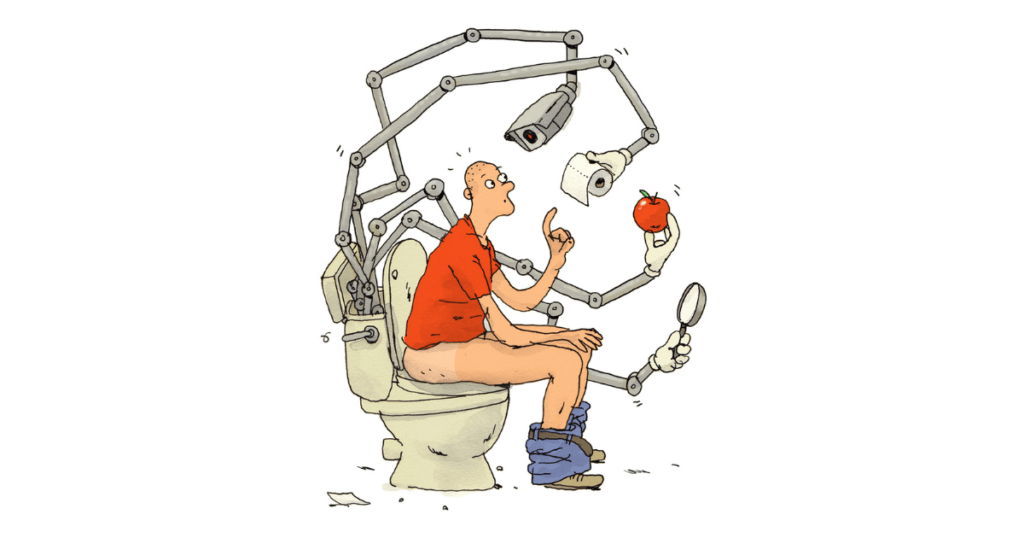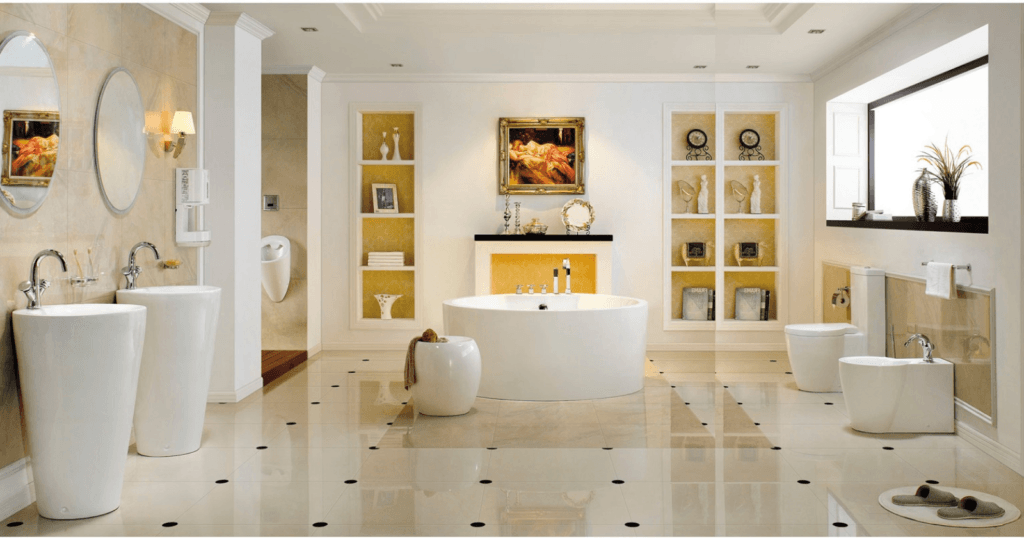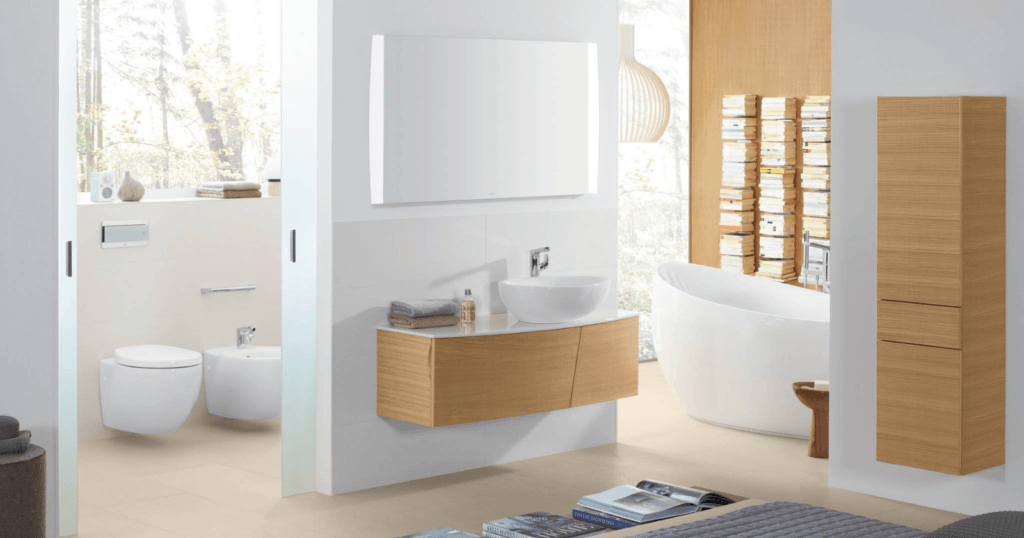
So, what is a smart toilet? Well, it’s like having a personal bathroom butler! This advanced fixture makes my bathroom routine feel like a luxury spa experience. Imagine automatic flushing, self-cleaning magic, heated seats, and a built-in bidet that gives you a royal treatment.
These high-tech marvels are all the rage, especially in tech-savvy places like Japan. They offer everything from adjustable water pressure to air dryers—who knew going to the bathroom could be so fancy?
But let’s get real for a second. A smart toilet isn’t just about luxury; it’s an investment. Sure, the initial cost is higher, and you’ll need to think about installation and maintenance. But trust me, the perks in hygiene, comfort, and saving on toilet paper make it totally worth it. Plus, who wouldn’t want to impress their guests with a toilet that practically does everything except sing?

So, What Is A Smart Toilet?
So, what is a smart toilet? Picture this: it’s like having a tech-savvy butler in your bathroom! A smart toilet is an advanced fixture that makes your bathroom experience feel like a high-end spa day.
We’re talking automatic flushing, self-cleaning magic, heated seats, and built-in bidets. Some even let you customize water pressure and temperature; they come with air dryers. In short, a smart toilet is where luxury meets technology, turning a mundane routine into something surprisingly delightful.

Understanding Smart Toilets
Smart toilets have evolved significantly from traditional toilets and offer a host of advanced features that enhance user comfort, hygiene, and overall bathroom experience.
Evolution and Technology
The evolution of smart toilets began with Sir John Harington’s invention of the flush toilet in 1596. Modern smart toilets emerged in the 1980s. They incorporate advanced technology to improve functionality and user comfort. Japan has innovated these high-tech toilets, integrating features like heated seats, bidet functions, and automated flushing systems. Today, these toilets blend traditional plumbing with smart technology for a seamless user experience.
Key Features and Benefits
Smart toilets come with numerous features designed for convenience and hygiene. These include heated seats for winter comfort, bidet functions with adjustable water temperature, automatic flushing, and self-cleaning capabilities. They often include remote controls or can be operated via smartphone apps for personalized settings. Many models also have eco-friendly options to conserve water and energy; some feature a tankless design for a sleek, modern look. Night lights and motion sensors add to the convenience of making nighttime trips easier.
Popular Brands and Models
Several brands have made a mark in the smart toilet market. Toto is renowned for the VOVO and its comprehensive features and reliability. Kohler offers the Numi with an elegant design and smart functionality. The Eplo Smart Toilet and Woodbridge stand out for their affordability and feature-rich designs. The Vovo Smart Bidet Toilet combines luxury with practical features, making it a popular choice. Each of these models integrates advanced technology to provide a superior bathroom experience.

Functionality and Convenience
Smart toilets bring a host of features designed to enhance hygiene, comfort, and integration with modern smart homes.
Enhanced Hygiene
Many smart toilets include a bidet function with adjustable water pressure and temperature, making cleaning more thorough and gentle on the skin. This can be especially helpful for individuals with sensitive skin or mobility issues.
Self-cleaning nozzles ensure the system remains sanitary. Some models also feature an air dryer and deodorizer, which further boosts hygiene and freshness.
The automatic flush feature reduces contact with potentially dirty surfaces, contributing to a more hygienic experience.

User Comfort and Preferences
Smart toilets prioritize comfort and personalization. Heated seats and adjustable bidet settings allow users to customize their experience to their liking.
Some models also have seat temperature control and ambient lighting for convenience, especially during nighttime.
For hands-free operation, features like automatic lid opening and closing and foot-activated flushing minimize physical effort and improve user experience.
Integration with Smart Homes
Smart toilets are not just standalone units; they seamlessly integrate with smart home ecosystems. They can be controlled via smartphones or voice commands, offering high convenience.
Advanced models communicate with other smart home devices, such as motion sensors, for enhanced functionalities like automatic dual flush.
Smart toilets can also remind users about maintenance needs, ensuring they stay in optimal working condition.
Radio capabilities in some models allow users to listen to music or news, merging entertainment with everyday routines.

Installation and Maintenance
Installing and maintaining a smart toilet requires careful attention to plumbing and electrical needs. Regular upkeep is essential to ensure optimal performance and longevity.
Plumbing Requirements
To start, make sure the water supply is turned off. Then, disconnect the old toilet and prepare the area for the new smart toilet. After that, connect the smart toilet’s water supply line to the home’s plumbing system.
Afterward, turn on the water supply and check for leaks. Install any components like the bidet wand or control panel, following the manufacturer’s instructions. Running electricity to the toilet might be necessary, which can mean installing an electrical outlet or opening walls.
- Connecting the water supply
- Potential electrical installations
- Leak checks
Installation costs can vary, especially if professional help is needed.
Ongoing Care and Upkeep
Like regular toilets, smart toilets need regular maintenance. Keep the surfaces clean to prevent bacteria build-up. Many smart toilets have self-cleaning features, such as automatic bowl cleaning or UV sanitation.
- Wiping down surfaces
- Using self-cleaning features
- Checking for software updates (for connected models)
Monitor for any signs of wear or malfunction in the electrical components. Address repairs promptly to maintain hygiene and functionality. Following these guidelines ensures the toilet remains durable and effective.
- Surface cleanliness
- Functionality of self-cleaning parts
- Efficiency of electrical and plumbing components

Cost and Considerations
Investing in a smart toilet requires considering cost, features, and potential benefits. Let’s examine the investment value and price comparisons.
Investment Value
The initial price tag of a smart toilet can be quite high compared to traditional toilets. Basic models range from $500 to $1,000, while mid-range options cost between $1,000 and $3,500. High-end versions may exceed $7,000. Installation adds another $200 to $500, and electrical work can cost $100 to $200 if an outlet is needed near the toilet.
Maintenance is also a key aspect to consider. Smart toilets often have advanced features like an auto deodorizer or emergency flush systems, which might need occasional servicing. Although luxury features such as a skirted design or water pressure adjustments are desirable, they may also require more frequent maintenance checks.
Comparing Prices and Features
Comparing different models involves looking at features and costs. For example, the American Standard Advanced Smart Toilet is often noted for its blend of functionality and reasonable pricing, making it an excellent investment.
The Woodbridge offers solid features without a hefty price for those on a budget.
On the luxurious side, the Kohler Numi 2.0 stands out for features like ambient lighting, voice control, and enhanced water efficiency – excellent for high-end apartments.
It’s crucial to consider space-saving designs, especially if bathroom space is limited. Some smart toilets can be bulkier, which might be challenging in smaller bathrooms.
Additionally, noise levels during flushing or operation and capabilities like power outages functionality can make a big difference in daily use. Hence, choosing a smart toilet goes beyond price; it’s about finding the right mix of features and budget.

Conclusion
Smart toilets offer several features that can improve daily life. These include automatic flushing, bidet washing, and seat warming. These all focus on enhancing comfort and hygiene.
They also help with water conservation, which is an added environmental benefit. By using water wisely, these toilets can reduce overall consumption.
Smart toilets promote independence and dignity for individuals with mobility challenges. Health monitoring features can also provide valuable data for monitoring personal well-being.
In terms of cost, investing in a smart toilet can be seen as worthwhile due to its long-lasting benefits. From improved cleanliness to advanced functionality, smart toilets represent the future of bathroom technology.
Are smart toilets worth the money?
Smart toilets offer numerous advantages and can be a worthwhile investment, given their daily use. Over time, you’ll appreciate the value they add to your routine. The heated seat feature alone can be a cozy and welcoming luxury on chilly days.
